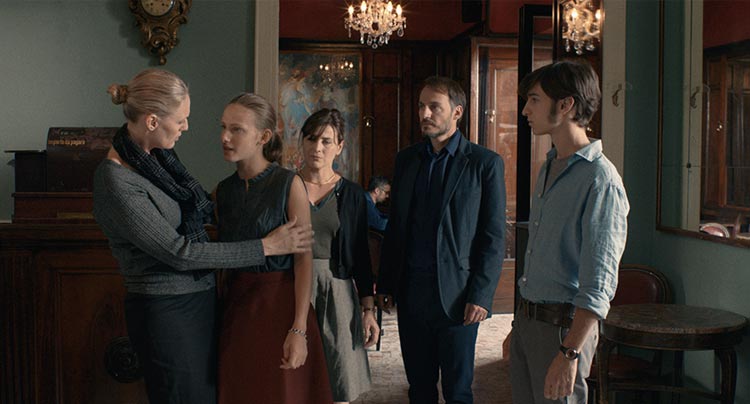TIFF 2014: La Sapienza

Eugene Green’s films are an acquired taste, to say the least. The French-American director’s style tends to highlight artifice to an uncomfortable degree. Actors are deliberately coached to deliver their lines in a strange, droll tone, like they’re speaking in a video on how to learn a foreign language. At the same time Green shoots his actors head-on, making them stare the camera down the entire time. It takes some time to adjust, but La Sapienza certainly has a strong command of its off-kilter mood, and by the end it creates a lovely harmony between its lush cinematography and rich thematic content.
Alexandre (Fabrizio Rongione), a successful architect, falls into a personal and professional crisis: his relationship to wife Alienor (Christelle Prot Landman) feels lifeless (this is where Green’s style works like gangbusters), and he’s almost lost the passion for his livelihood. Alexandre decides to go on a trip to Italy to observe the work of Francesco Borromini, one of his favorite architects, and Alienor agrees to go with him. During a brief stay in Stresa, a small northern Italian town, the two bump into two young siblings; Goffredo (Ludovico Succio), about to start studying architecture in Venice, and Lavinia (Arianna Nastro), a young girl suffering from a medical condition. Alienor chooses to stay behind and care for Lavinia, offering the young, eager Goffredo to go to Italy with Alexandre in her place. Alexandre bristles at the idea, having no choice but to accept his wife’s proposal.
At this point the film branches off, cutting back and forth between Alexandre and Goffredo’s trip and Alienor and Lavinia’s time together. Through Alexandre’s conversations with Goffredo, the older architect eventually rediscovers his love for architecture, and Alienor experiences a similar revelation. Green spends plenty of time letting characters talk about architecture, space, and the way people occupy these spaces. It also shows through his direction, putting a large amount of focus on Borromini’s gorgeous buildings along with how light and people operate within them. Fans of Baroque architecture can simply watch Green and cinematographer Raphaël O’Byrne’s well-composed shots of Borromini’s work and come away satisfied.
But even those without any interest in architecture can still find something to admire in Green’s unique, pleasurable oddity. The film’s bizarre mood engrosses more than it alienates, making it easy to fall into Green’s very specific rhythm. It’s a nice entry point into a peculiar cinematic universe, and those willing to open themselves to it will find a lot to enjoy.
